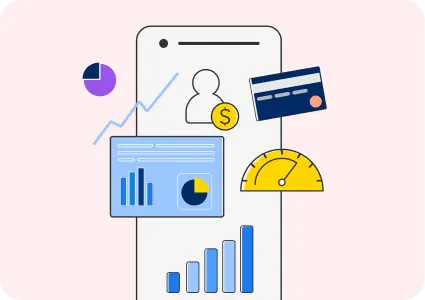In the world of finance, a person’s creditworthiness is crucial for both borrowers and lenders. The credit score is the telltale sign impacting an individual’s ability to apply for loans and an opportunity for financial institutions to gain interest payments. But how do you compute this? What are the necessary tools for credit scoring?
To help you know more about how credit is computed, this blog explains the analytical tools used, their significance, and the different types of scoring methods available. By learning how credit scoring works, you can integrate the appropriate scoring tool that your financial institution can utilize.
Understanding Credit Scoring Tools
A credit scoring tool is a software or algorithmic system used by lenders to evaluate the creditworthiness of individuals or businesses applying for credit. These tools analyze different factors like credit history, payment behavior, income levels, and outstanding debts to generate a credit score.
Comparing the credit score vs. alternative data,this scoring method is a more traditional way of determining the creditworthiness of a loan applicant. The score is represented only by a numerical value to assess the applicant’s credit risk.
Imagine you’re applying for a loan. Behind the scenes of your application, a credit scoring tool steps in to check for your financial standing through your credit score. And if your score ranges from 300 to 850 (depending on the specific analysis model used), that’s a quick indicator of your likelihood of repaying the borrowed money on time and in full.
Different Tools Used for Credit Scoring
While the core function remains the same, there are different types of credit scoring models used by financial institutions:
FICO Score
Developed by the Fair Isaac Corporation (FICO), this is the most widely used credit scoring tool in the United States of America. The FICO scores consider various factors including payment history, credit utilization ratio, length of credit history, new credit inquiries, and types of credit used. In this criterion, the payment history typically holds more weight than the other factors.
Vantage Score
The VantageScore was created by three major credit bureaus: Experian, Equifax, and TransUnion. This method offers an alternative credit scoring model, differentiating from the FICO tool based on which criterion it emphasizes.
The computation for this scoring model is based on an applicant’s payment history, age and type of credit they have, the percentage of their credit limit used, their total balances and debt, recent credit behavior and inquiries, and their available credit. This score can range between 350 to 850, with higher scores indicating a lower risk of loan defaults.
Alternative Scoring Models
While traditional scoring systems like the FICO and VantageScore are widely used, alternative scoring models offer supplemental data for financial institutions to use when determining an applicant’s creditworthiness.
For instance, some data sharing products utilize a user’s Visa account transaction details to highlight their financial behavior. Using the information from this product can accelerate your financial institution’s loan assessment by going through the spending habits and transaction volume of the user.
Another similar product is Brankas' GoPay Data. This system uses the information from users’ GoPay accounts to get to know them and evaluate their creditworthiness based on their spending habits. As a financial institution, adapting this system can be beneficial in expediting your onboarding and approval processes for loan applications.
Certain industries can also utilize specialized credit scoring models tailored to their specific risk profiles. For example, if you’re a lender in the auto-loan industry, you may opt to use a model that places more emphasis on a borrower’s car ownership history and income stability.
The Importance of Credit Scoring Tools
Understanding how credit scores are computed is a crucial part of every financial institution.

Credit scoring tools can automate the process of reviewing your applicant’s creditworthiness, enabling your organization to assess applications quickly. And if you integrate products like Brankas' API for Lenders into your financial ecosystem, you can further streamline the evaluation process by utilizing information from the users' existing data from other banks and platforms.

Secondly, it can perpetuate existing financial inequalities as access to traditional credit products often correlates with socioeconomic status.

Finally, traditional credit reports fail to capture responsible financial management outside of credit lines, such as timely rent payments or responsible use of alternative financial services like Buy Now, Pay Later (BNPL).
Overall, credit scoring tools are invaluable for financial institutions. They facilitate standardized evaluations, streamline your loan processes, manage risk effectively, and promote your business’ responsible lending practices. This creates a win-win situation for both you and your borrowers.
Partnering with Brankas for Credit Scoring Solutions
At Brankas, we specialize in modern financial technologies that can help businesses like yours to implement a more streamlined and secure financial ecosystem. We understand the importance of responsible credit management, which is why we provide solutions that can simplify your processes. By collaborating with us, you’re opening your business to more growth opportunities through lending.





